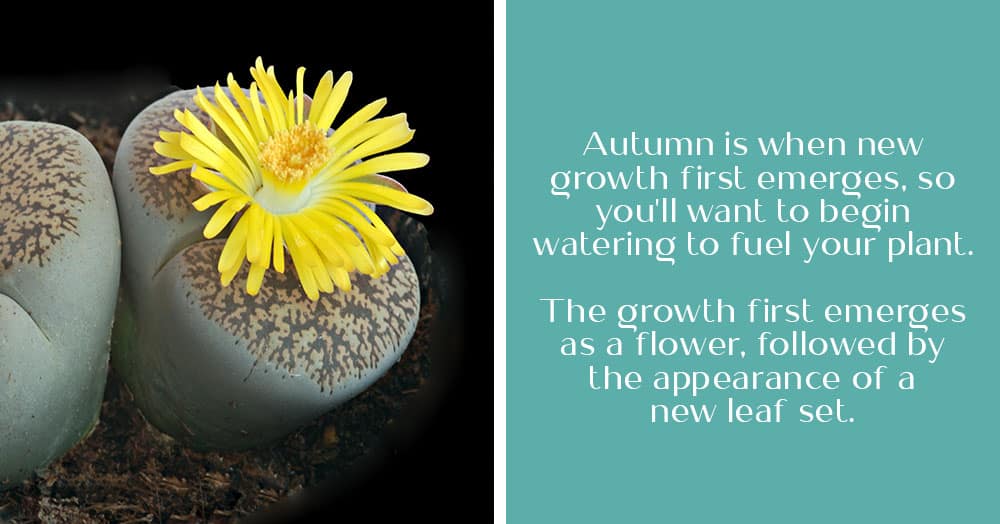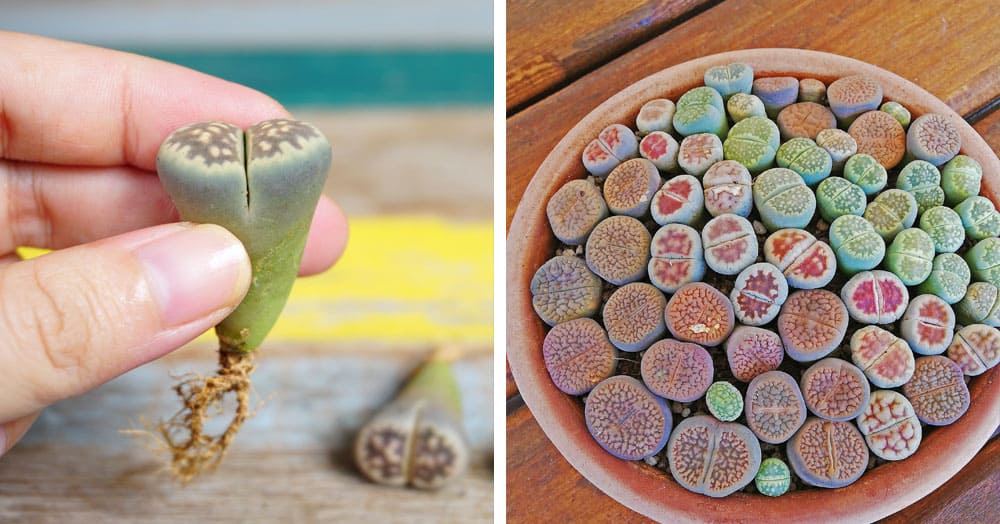If, after watching E.T., you’ve always secretly wished for your own pet alien to care for, then we highly suggest getting a lithops plant. These peculiar yet adorable succulents have a distinctly alien-like vibe. Most folks know them as “living stones,” some compare them to brains, and some say they look like tiny butts. But, you have to admit, they’re pretty cute butts.
Now, if you’re a seasoned pro when it comes to succulent care, it’s important to note that the lithops plant has different care requirements. It has a strange growth cycle that isn’t quite like other succulents. That kind of adds to the suspicion it might be an alien! However, lithops care isn’t difficult or unmanageable—it just requires a bit of know-how.
The Strange, Yet Beautiful Lithops
Lithops come in every color of the rainbow, and mixed arrangements look fascinating. Each little plant only has two plump leaves at a time—hence the comical comparisons. Since lithops don’t spread out much, you can easily put 10 or 20 in a single pot. With so many interesting speckled patterns and vibrant color combinations, the results are bound to be amazing. Plus, they flower in fall, and the blossoms are so pretty!

How Often Do You Water Lithops?
Lithops hail from the African desert, so they’re accustomed to periods of drought and won’t need as much water as your typical houseplant. However, while you’re probably used to watering your plants more in the summer and less in the winter, lithops plant care is totally different. Summer is its dormant period, and watering during this time can make the leaves get mushy.
In the winter, a new set of leaves emerges from the crack between the two old leaves. The new leaf set will drain moisture from the old leaves during this time, and the old leaves dry up and fall off. If you water during winter, this will confuse the plant, and both sets of leaves will die.

Autumn is when new growth first emerges, so you’ll want to begin watering to fuel your plant. The growth first emerges as a flower, followed by the appearance of a new leaf set. Water the soil thoroughly, but allow it to dry out completely before watering again.
Once the old leaves are dead in spring and you’ve removed them, you can resume the care tasks and begin watering again. Start with a little less water than usual to gently encourage the new leaves to expand. Allow the soil to dry, and then water the soil more deeply again. If you follow this regime correctly, you can expect your plants to live for 40–50 years!
How Much Sun Does A Lithops Plant Need?
Lithops love lots of bright, direct sun, so find the sunniest place possible for them! A South-facing window works best, but a West-facing window can work well too. If you live in a more Southern area with hot, sunny weather, then you could probably get away with an East-facing window that gets lots of morning sun. Just make sure a big tree canopy isn’t shading the window!

Make Lithops Care Easy By Using Good Soil
Lithops prefer fast-draining, loose soil that’s a bit pebbly. A potting mix specially formulated for succulents will work quite well. Alternatively, you can mix a standard potting soil with lots of perlite to give it a chunkier texture. This will help prevent moisture from lingering in the soil too long and becoming soggy. This succulent absolutely hates waterlogged soil! Resist the urge to overwater, ensure your lithops are in succulent-friendly soil, and you should have a happy plant.
This strange alien plant isn’t the most common succulent on the planet, but you won’t have to search the galaxy for it. If you’re looking for lithops plants near Orange County, O.C. Succulents has a stellar assortment. Visit us soon to bring home your cool new alien pets, and if you have any questions about how to care for them, don’t hesitate to ask our experts!


